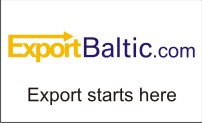Analytics, Baltic States – CIS, Banks, EU – Baltic States, Financial Services
International Internet Magazine. Baltic States news & analytics
Monday, 10.02.2025, 17:47
Lithuanian customers are the most satisfied with banking services in the Baltics
 Print version
Print version
The Estonian consumers are, however, more critical towards the banks and their satisfaction is lower. Finland is the only non-Baltic country in the top.
Estonia
B2C: We see two major changes since 2012; Danske Bank has recovered impressively, while Swedbank has fallen substantially. Danske went from last position to first, and the contrary is true for Swedbank. Variations of this magnitude are extremely rare.
The spread amongst the banks is now, however, very small – all banks are within 1.6 units, as compared to 7.2 last year. This indicates that the competition is fierce amongst the banks.
The general trend for the industry as a whole continues to be negative for the 5th year in a row.
B2B: We see that SEB has increased its satisfaction, while DNB’s and Nordea’s have fallen.
The group ‘Others’, consisting of smaller banks, has shown tremendous results over the last two years and shows the clearly the highest satisfaction in the market.
Latvia
B2C: All the banks’ satisfaction levels have decreased on the consumer side. DNB’s score has decreased and now Swedbank scores the highest. However, the differences between the banks are small. In addition to customer satisfaction, there are also notable drops in the value-for-money and loyalty aspects.
B2B: Here we note that SEB has increased substantially, now clearly achieving the highest satisfaction. SEB is rising now for the third year in a row, which is impressive. Nordea also continues to improve for the second year in a row. The bank is getting closer to the others, albeit still slightly behind.
DNB and Swedbank show decreases.
Lithuania
B2C: For the final consumers, we see that Swedbank shows the largest decrease. Also SEB and DNB are marginally lower than last year. The group “Others”, shows a large increase.
The general trend for the industry as a whole is slightly positive – now for the second year in a row.
B2B: Amongst the corporate customers we see large increases for DNB and SEB, as well as the group ‘Others’. Here especially Šiaulių bankas seems to be doing well. Swedbank, on the other hand, has gone down marginally.
On industry level we see a notable increase in the satisfaction level.
This survey is based on around 5,000 phone interviews with banking customers in the Baltic countries. The basic results are official, but the more detailed analyses of different banks are confidential. The interviews were conducted during August 8th –September 17th 2013.
The target population is 18-79 year old people living in each country on the B2C-side and companies active in the specific country on the B2B side. A combination of registers and random digit dialing ensures the representativeness of the sample. On the 0-100 scale, the error margins are + /- 3 units on the 95 per cent confidence level. The explanatory power of the model is on average 66 %.
The customer satisfaction index (the EPSI-index) is generated by PLS-regression analysis on five variables; image, expectations, perceived product and service quality, as well as value-for-money.
- below 60 means bad/low satisfaction
- 60 – 75 average/satisfactory
- 75 – 100 good/very good, which has a large effect on a company’s business success
Customer Satisfaction is a leading non-financial indicator capturing crucial information about future trends and market development.








 «The Baltic Course» Is Sold and Stays in Business!
«The Baltic Course» Is Sold and Stays in Business!

